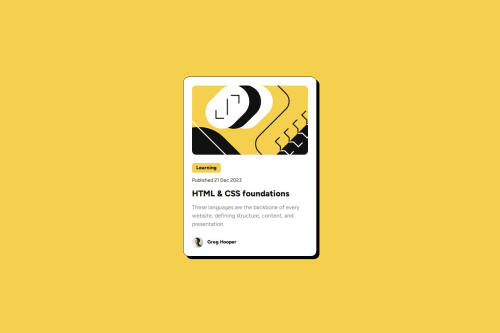Blog Preview Card with tailwindcss and @font-face

Solution retrospective
This time I used prettier with the tailwind plugin to format the code, so all the tailwind classes are sorted properly.
Also I used the screenshots from the design to implement it first, it was quite cumbersome to get all the measurements (font-sizes, heights and colors) because the image was antialiased. Then I used the figma to correct the initial values.
Also I was distracting myself during this challenge by watching youtoube videos, I should stop that :D
What challenges did you encounter, and how did you overcome them?Somehow the Figma download did not work so I used the screenshots to start the challenge but it was very cumbersome. Finally I got the Figma download to work by copying the URL and use wget from another host.
Any feedback on tailwind specific issues are appreciated, other feedback is appreciated as well.
Please log in to post a comment
Log in with GitHubCommunity feedback
- @Alex-Archer-I
Hi!
That's a good catch with
ultag (html tag) with "Learning" tag (actual tag)! I thought that there could be several of them, but it just doesn't strike me to use list tags =)I guess you missed a hover effect a bit =) The header should be yellow under the hover and it should have
cursor: pointer. And you can add transition effect to make hover smoother. Also I suppose since it's clickable elements there should be a link inside it.P.S If it was a youtube videos explaining advanced css topics than that's ok, if it was cats riding vacuum bots than maybe no, but if it was cats explaining advanced css topics while riding vacuum bots than I confused and want to see it.
Marked as helpful
Join our Discord community
Join thousands of Frontend Mentor community members taking the challenges, sharing resources, helping each other, and chatting about all things front-end!
Join our Discord